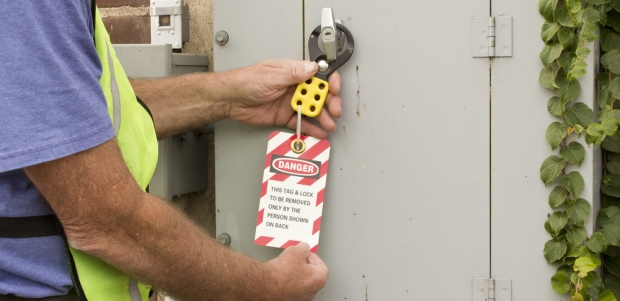
Technology to the Rescue
LOTO technology can create a safer workplace and make compliance more efficient.
According to the U.S. Bureau of Labor Statistics, up to 80 percent of injuries related to servicing and maintenance of equipment and assets can be attributed to not following simple lockout/tagout (LOTO) procedures. Additionally, LOTO is consistently listed in OSHA's list of most frequently cited violations, with the agency citing 120 fatalities and 50,000 injuries each year that could be prevented by instituting a LOTO program.
With those statistics in mind, how can companies improve their LOTO practices? It starts with new technology that streamlines the LOTO process and provides greater efficiencies and visibility. New technology on the job site or in the workplace can be intimidating for both managers and their employees, but it could be the difference between life and death, making it well worth the investment.
Here are three ways new LOTO technology makes the workplace safer and helps companies stay compliant:
1. It makes compliance easier and more efficient than ever before.
It is estimated that at least 60 percent of companies that need LOTO procedures simply do not have them. As a result, these companies are often out of compliance and are putting their employees, and their reputation, at risk. Many times they do not realize that they need LOTO technology until after something has gone wrong. No company can afford this in a day and age where safety is increasingly under the microscope and linked to corporate reputation and effectiveness.
New LOTO technology simplifies the ability to meet compliance standards, which, in turn helps to ensure the safety of employees on work sites. Safety and compliance managers can access and update the LOTO procedures at any time from any location using the Web, smartphones, or tablets.
Technology makes it easier to author LOTO procedures up front, and then certify and edit those procedures as required. Users also can set up periodic audits of the procedures, as required by OSHA. This new automated scheduling helps ensure safety and compliance managers don’t miss required LOTO procedure audits.
The ROI for this new LOTO technology investment comes down to this: How quickly can your team author, certify, and manage all required LOTO procedures in your facility, including all periodic audits and their timely completion? It is significantly more cost efficient and effective to use technology to create and manage your LOTO program. The last factor to consider is: What is the return on saving a life or a limb?
2. It eliminates dangerous shortcuts.
Now that the LOTO procedures have been authored up front, workers can now follow step-by-step procedures on how to lock out each isolation point on the equipment. Each step is time-stamped and recorded, and there is verification after each step before a worker can move on to the next isolation point. This process repeats, no matter how many steps there are in the LOTO procedure, ensuring that nothing is overlooked.
It is not uncommon to hear stories of someone working on a machine for 30 years without an incident and then suddenly the worker—maybe in his last week before retirement—does not follow a procedure and has an accident that could have been prevented. You just never know. But new LOTO technology can avoid such a tragedy, simply because it can prevent shortcuts. The technology records all steps and events in the history of all assets, providing full transparency and reports for any auditors. There is no longer a need to maintain or search out paper records on short notice.
3. You are better informed—all the time.
Factories and major manufacturing facilities can be massive and complicated places, but safety is always a top concern. For safety managers in particular, it can be extremely challenging to keep a handle on what is happening at any given time. That is where new LOTO technology comes in: It provides traceability in your local facility or any other implemented facility around the globe.
All of this data helps employees on the floor because it creates clarity. The technology clearly documents every procedure to seal off an isolation point, and when executed, it shows who completed the lockout and when. As a safety leader, that leaves you better informed and in greater control.
People are always resistant to change. That cannot be denied. However, think about seatbelts for a minute. Hardly anyone wore those 50 years ago, but a change in the interest of safety took hold and now it is standard practice for all drivers. LOTO is no different. There are now tools in place that make LOTO significantly easier and more efficient. That should make all of us more comfortable.
This article originally appeared in the March 2015 issue of Occupational Health & Safety.